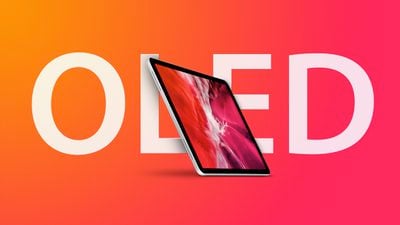Apple has called off a joint project with Samsung to use a Samsung-developed OLED display for a forthcoming 10.9-inch iPad Air, according to a new report today from The Elec.

The project was stopped due to either the single stack structure of OLED panel or profitability issues or both, people familiar with the matter said.
Single stack refers to the current widely used OLED panel structure where red, green and blue form one emission layer.
Apple is reportedly not satisfied with the brightness levels of single stack OLED panels and is also wary of the panel's lifespan, since consumers typically hold onto iPads for longer compared to smartphones, which have a more aggressive upgrade cycle.
Instead, Apple wants to use a two-stack tandem structure for its first OLED iPad that stacks two red, green and blue emission layers instead of just one. This doubles the brightness and extends the panel's life by up to four times.
However, Samsung has only commercialized a single stack structure and is either not able or not willing to supply the two-stack technology, according to the report.
Profitability is also said to be a factor in Samsung's unwillingness to provide the technology. Unless Samsung can be sure that the OLED iPad Air will be sold for a long time, preparing for the back-end module process for the products won't be worth the cost.
Most of the rumors that we've heard about an OLED iPad Air suggest that it's coming in 2022. However, now that Samsung isn't involved in development, The Elec suggests the OLED iPad Air will not see the light of day until 2023. A previous report from Display Supply Chain Consultants (DSCC) claimed Apple will release its first OLED iPad in 2023, although no reason was given for the changed production roadmap.
Back in March, Apple analyst Ming-Chi Kuo said that Apple is expected to start using OLED next year, while DigiTimes has also predicted a 2022 release for an OLED iPad, as have sites like ETNews, which rely on supply chain data.
OLED technology is expensive, which is a factor that has thus far limited it to smaller devices like iPhones and Apple Watches. When adopted in the iPad, it will bring improved brightness, higher contrast, deeper blacks, and wider viewing angles.






















